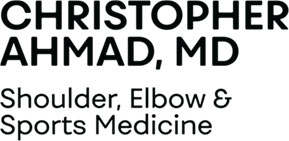After 11 years working with the New York Yankees and taking care of a huge number of professional baseball players with UCL injuries, I have observed something very interesting. As I sat delivering the news to players who had unfortunately injured their UCL, I would talk to them and help them as they tried to manage their emotions related to the terrible news. I would ask if they had pain or other symptoms at all leading up to the injury. And then after a while, I would also ask if they were ever injured and shutdown because of an elbow injury while growing up. It seemed that many players were indeed shut down because of elbow pain at a young age. Maybe a link existed between getting injured as a child and then needing Tommy John Surgery as an adult?
To better understand this observation we surveyed 169 major league and minor league baseball players during their baseball spring training period. These players were asked if they were injured as a child or as an adolescent. The results were concerning:
51 of the 214 pitchers had already undergone Tommy John Surgery (the percentage is consistent with current statistics of Tommy John surgery prevalence in professional baseball). 55% of pitchers with a UCL injury had a history of elbow injuries as an adolescent/child, compared with 18% in the uninjured group. This was a statistically significant difference. Essentially, if you recalled being injured as a child or adolescent you had three times the risk of having Tommy John surgery as a professional player.
We published this study in the Orthopedic Journal of Sports Medicine in 2019 with the following conclusion: “Pitchers with a previous childhood elbow injury had a significantly higher incidence of UCL injuries during their adult career, suggesting possible predisposition to UCL injury and warranting further research.” This is the first time the feature of childhood baseball injuries and its impact on professional baseball has been described and published in orthopedic literature.
Incredible amounts of research has been devoted on factors predictive of needing a Tommy John Surgery, such as pitch velocity, pitch type, pitching while fatigued, pitch count, and pitching mechanics. Now we have uncovered an additional and remarkable risk factor; childhood/adolescent medial elbow injuries. These injuries are often referred to as “Little League elbow” and are thought to be caused by repetitive microtrauma to the elbow ligament or growth plate. The majority of these injuries are successfully treated non-operatively with rest and physical therapy. But why are these young athletes more destined for Tommy John surgery than injury free kids?
We can theorize 2 explanations. First, after sustaining an elbow injury as a child the injury may not heal back to normal despite ability to resume pain free throwing. There may be scar tissue in response to the healing, or simply the pain from the injury resolves and the ligament is still weak but pain free and functional. We know that the UCL is changed in throwers compared to non-throwers, where the throwers ligament demonstrates thickening and calcification. This occurs even in asymptomatic young pitchers. If the ligament never heals to full strength after an injury, it is predisposed to a further more serious throwing injury down the line.
Another second possibility could be that these early childhood elbow injuries are related to poor pitching mechanics, volume of throwing, fatigue, or early high velocity. If these variables are never corrected as the player matures, then future UCL injuries are sustained. This area is now a focus of our ongoing research.
Professional and Amateur Pitchers’ Perspective on the Ulnar Collateral Ligament Injury Risk
Danica D. Vance,*† MD, Frank J. Alexander,† MS, ATC, Brian W. Kunkle,‡ PhD,
Mark Littlefield,§ ATC, and Christopher S. Ahmad,† MD
OJSM 2019

